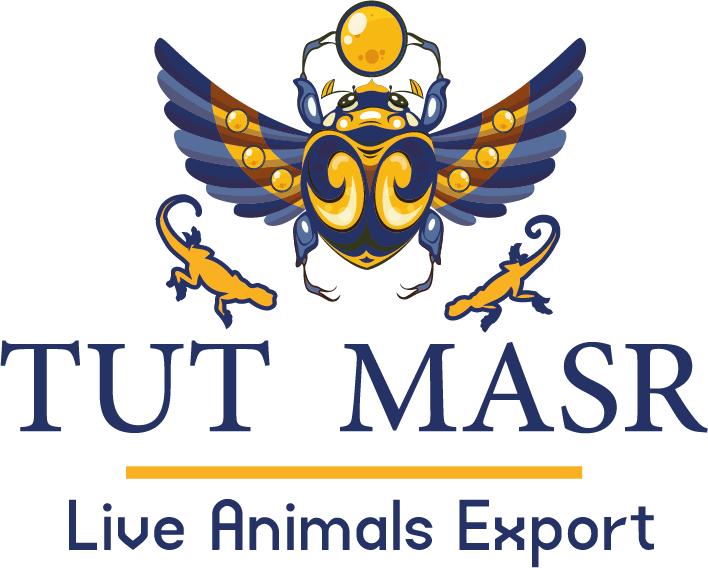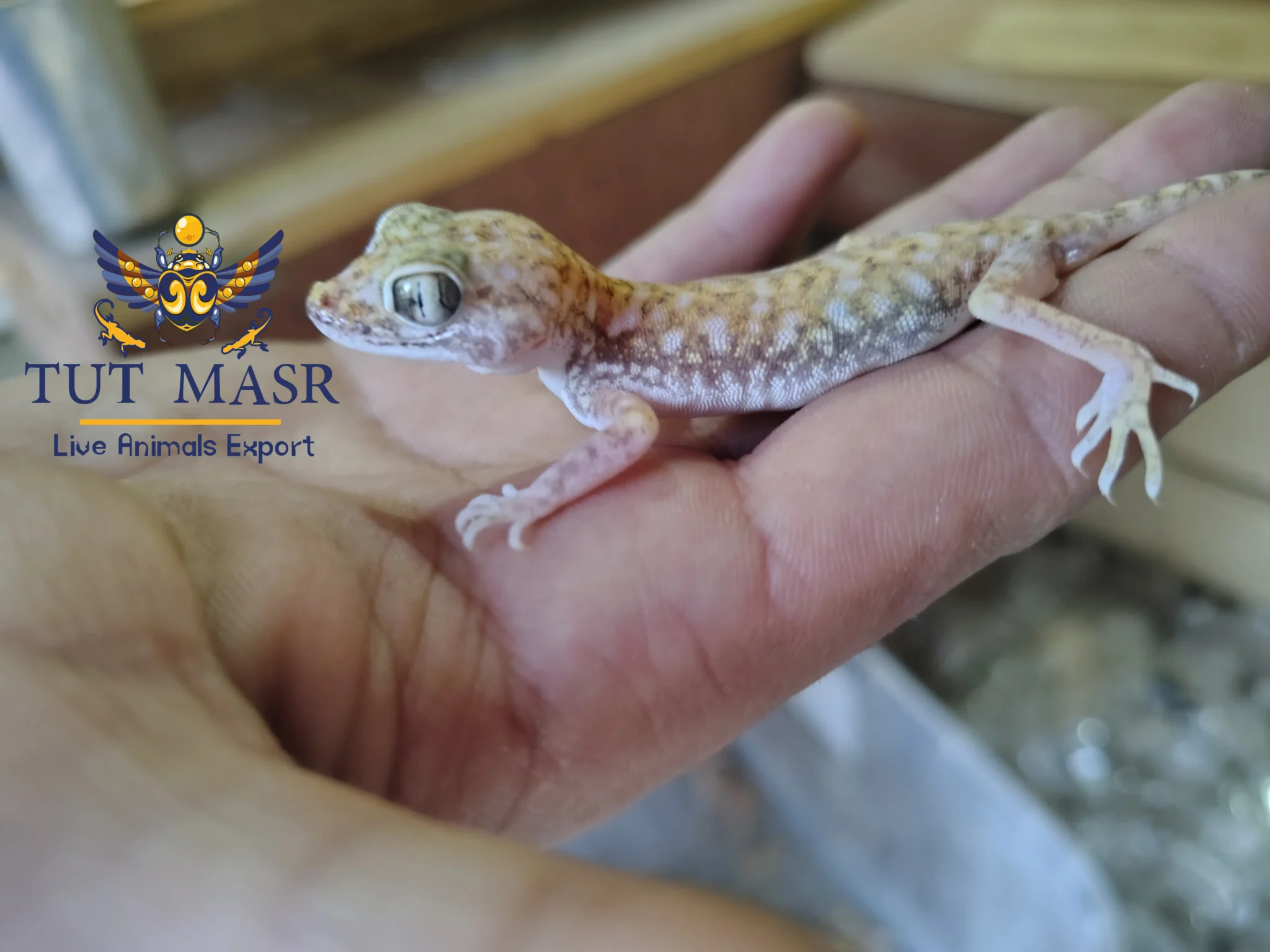Reptile: Introduction
Egypt is home to an extraordinary variety of geckos – resilient, fascinating creatures that thrive in our deserts, mountains, and cities. At TuT Masr, we take pride in exporting Egypt’s unique reptiles to the world, and geckos are among our most in-demand species for collectors, researchers, and exotic pet enthusiasts.
In this article, we explore Egypt’s most common geckos, their habitats, care requirements, and why they make such captivating additions to terrariums worldwide.
🧬 Scientific Classification (General)
- Kingdom: Animalia
- Phylum: Chordata
- Class: Reptilia
- Order: Squamata
- Suborder: Gekkota
- Family: Gekkonidae
🔍 Most Common Egyptian Gecko Species
1. Fan-Fingered Gecko (Ptyodactylus hasselquistii)
- Habitat: Rocky deserts, ruins, walls
- Location: Sinai & Eastern Desert
- Traits: Unique fan-shaped toes for climbing, nocturnal
2. Sand Gecko / Petri’s Gecko (Stenodactylus petrii)
- Habitat: Sandy deserts
- Location: Western Desert
- Traits: Fringed toes for moving on sand, burrowing
3. Turkish Gecko (Hemidactylus turcicus)
- Common Name: Mediterranean House Gecko
- Habitat: Buildings, ceilings, near light sources
- Location: Coastal cities, Nile Valley
- Traits: Vocal, semi-transparent skin, urban-dwelling
4. Natterer's Dwarf Gecko (Tropiocolotes nattereri)
- Habitat: Rocky desert regions
- Location: Sinai and Eastern Desert
- Traits: Tiny size (under 5 cm), ground-dweller
5. Dune Gecko (Stenodactylus stenodactylus)
- Common Name: Short-fingered Gecko
- Habitat: Sandy dunes and desert burrows
- Location: Western and Eastern deserts
- Traits: Excellent desert survivalist
6. Ringed Wall Gecko (Tarentola annularis)
- Common Name: White-Spotted Wall Gecko
- Habitat: Cliffs, urban buildings
- Location: Southern Egypt, Nile Valley
- Traits: Large, spotted, active at night
7. Steudner’s Gecko (Tropiocolotes steudneri)
- Habitat: Rock crevices in arid environments
- Location: Eastern Desert, Sinai
- Traits: Extremely small and elusive
8. Tripolitanian Gecko (Tropiocolotes tripolitanus)
- Habitat: Dry, rocky desert
- Location: Western Desert near Libya
- Traits: Tiny size, thrives in remote areas
9. Moorish Gecko (Tarentola mauritanica)
- Habitat: Mediterranean coasts, buildings, and walls
- Location: Alexandria, Marsa Matruh
- Traits: Spiny texture, agile climber
🐾 Caring for Egyptian Geckos
Geckos are not only fascinating to watch – they’re also relatively easy to care for when provided with the right environment.
Feature | Details |
Terrarium Size | 20–60 cm depending on species |
Temperature | Day: 28–35°C / Night: 20–25°C |
Humidity | 30–50% (up to 60% for coastal geckos) |
Substrate | Sand, reptile carpet, or coconut fiber |
Diet | Crickets, mealworms, fruit flies, roaches |
Supplements | Calcium + Vitamin D3, dusted on food |
Lighting | UVB recommended + heat lamp |
Handling | Minimal, especially for dwarf and shy species |
⚠️ Important Notes
Health Risk: Geckos may carry Salmonella – always wash hands after handling.
Sourcing: All reptiles from TuT Masr are ethically sourced, and we strictly follow export regulations.
Lifespan: Most species live between 5 to 10 years with proper care.
At TuT Masr, we specialize in exporting Egyptian reptiles and insects, including rare and desert-adapted geckos. We ensure:
Healthy, disease-free animals
Transparent documentation & CITES-compliant shipping
Expert guidance on care and species identification
Whether you’re a pet shop, collector, or research institute — we’ll help you choose the right species and deliver them safely, legally, and professionally.
👉 Contact TuT Masr today to get a price list, availability chart, or custom export plan.
📧 Email: mahmoud@tutmasr.com
🌐 Website: www.tutmasr.com
📞 WhatsApp: +20 01119566552



